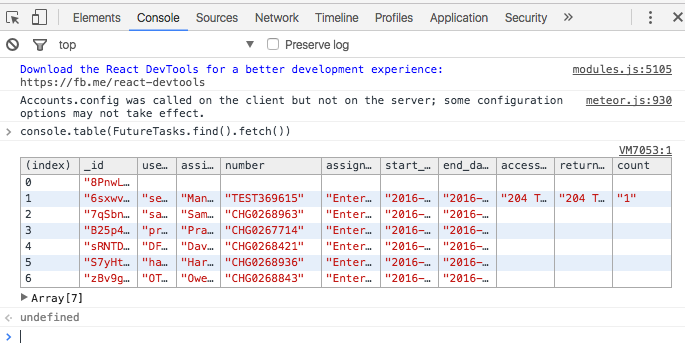My Mongo collection is clearly visible when I inspected in Chrome console

But within the meteor mongo shell it is still empty?
/lib/collections.js
var Schemas = {};
Schemas.FutureTask = new SimpleSchema({
number: {
type: String,
label: "TICKET_NUMBER",
max: 10,
index: true,
unique: true,
optional: true
},
userid: {
type: String,
label: "USER_ID",
max: 20,
optional: true
},
assigned_to: {
type: String,
label: "ASSIGNED_TO",
max: 50,
optional: true
// optional: false
},
assignment_group: {
type: String,
label: "ASSIGNMENT_GROUP",
max: 30,
optional: true /
},
start_date: {
type: String,
label: "START_DATE",
max: 19,
optional: true
},
end_date: {
type: String,
label: "END_DATE",
max: 19,
optional: true
},
access_rights: {
type: String,
label: "JOB_STATUS",
max: 30,
optional: true
},
returned_status: {
type: String,
label: "JOB_STATUS",
max: 30,
optional: true
},
count: {
type: String,
label: "COUNT",
optional:true
}
});
var Collections = {};
FutureTasks = Collections.FutureTasks = new Mongo.Collection('future_tasks');
FutureTasks.attachSchema(Schemas.FutureTask);
$ meteor mongo
use future_tasks
db.future_tasks.find()
empty?